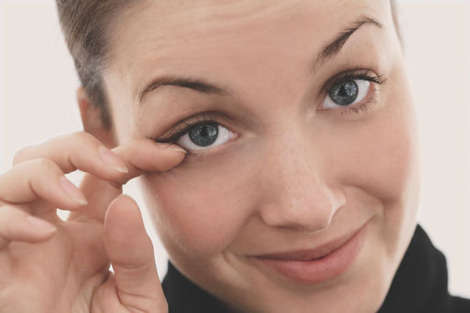The Eye Condition 70% of Adults Have Without Knowing

By Markham Heid, Prevention
The average American spends 6 to 9 hours every day staring at some type of computer screen, whether it's a tablet, a laptop, or a smartphone. And we're guessing you do, too.
If so, you may join the ranks of the nearly 70% of adults who suffer from "digital eye strain"--a progressive condition that could eventually lead to serious eye diseases, concludes a new report from The Vision Council, a nonprofit organization that supports the optical industry.
Have daily health, weight-loss, and food tips from Prevention's experts delivered right to you. Sign up for the free Prevention Today newsletter here!
Digital eye strain is an escalating health issue. Your eyes aren't made to stare at a fixed point for hours and hours on end, especially one that emits high-energy visible light, a.k.a., artificial "blue light." Overexposure to this type of light--and the fatigue of focusing on the same middle-distant point for a third or more of your day--can strain your eyes and cause dryness or redness, blurred vision, "tired" eyes, headaches, and back or shoulder aches in the short term, the report authors say. (Did you know you can eat for eye-health? Here are Dr. Weil's top vision-protecting foods.)
Long term, years of staring at a computer could lead to scarring of your cornea and partial loss of vision, says Clayton Blehm, MD, an ophthalmologist who has published research on computer vision syndrome. Long hours of screen time can also lead to dry eye disease--or an inability to manufacture sufficient tears to keep your eyes lubricated, explains Justin Bazan, OD, a member of the American Optometric Association who also acts as medical advisor to The Vision Council.
More from Prevention: 9 Tips For Younger-Looking Eyes
How can you tell if you're putting too much electronic stress on your eyes? If you find your vision feels strained, your eyes are watering or red, or you catch yourself rubbing a sore neck, temples, or shoulders, those are all signs you're overworking your eyes, Dr. Bazan says.
More from Prevention: Will You Get Cataracts?
To give your eyes a break, Dr. Bazan recommends following the 20-20-20 rule; that is, every 20 minutes you should take a break to stare at something 20 feet away for 20 seconds. Do this, and you'll help relieve the strain computer screens put on your peepers. (Need more relief? Try easy yoga for eyes--seriously.)
If you normally wear glasses, contacts, or reading glasses, talk to an eye doctor about specially designed computer glasses. "They're built to bring intermediate distance objects, like a computer, into focus and cut glare from competing light sources," he says. Even people who don't normally wear glasses may benefit from these types of specs if they spend a lot of time on a computer, Dr. Bazan adds. And don't forget to check out 5 more ways to age-proof your vision for more ways to guarantee clear vision for life.
